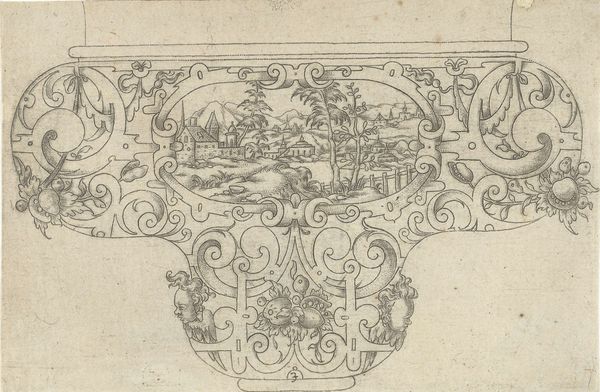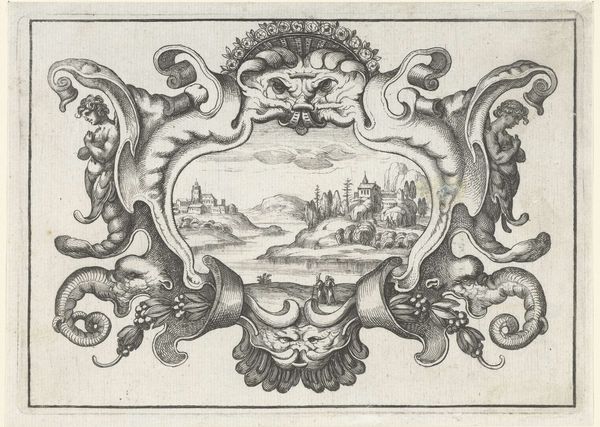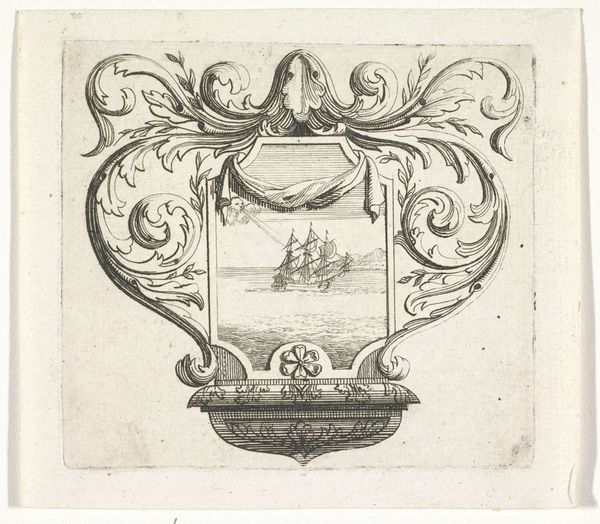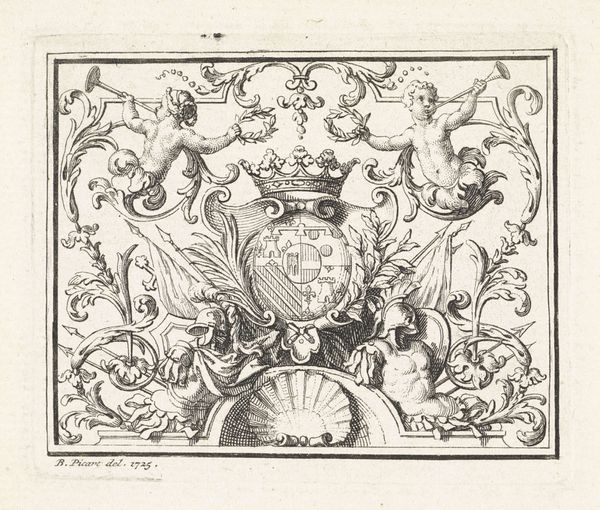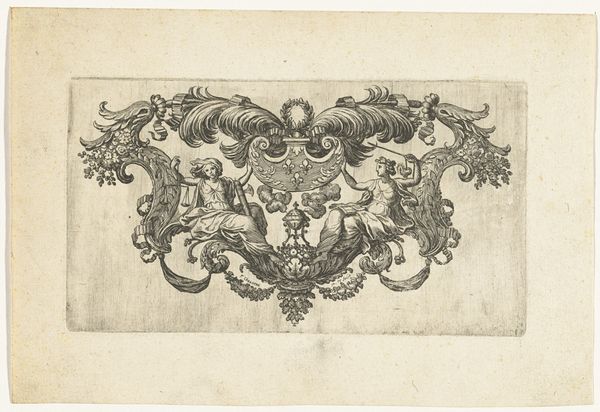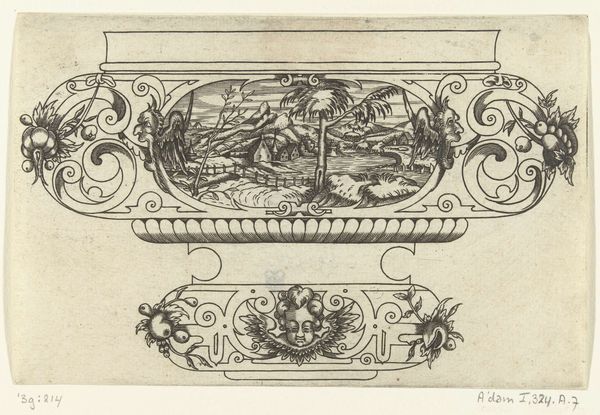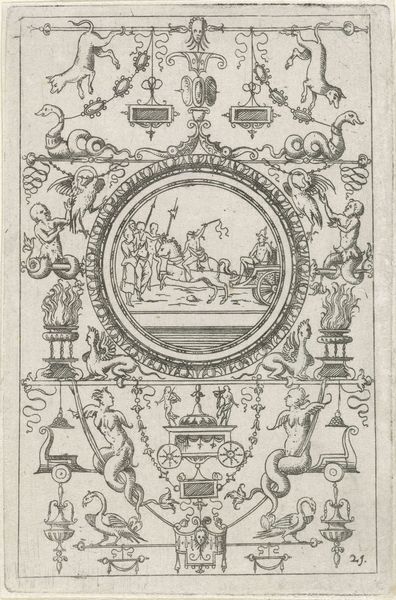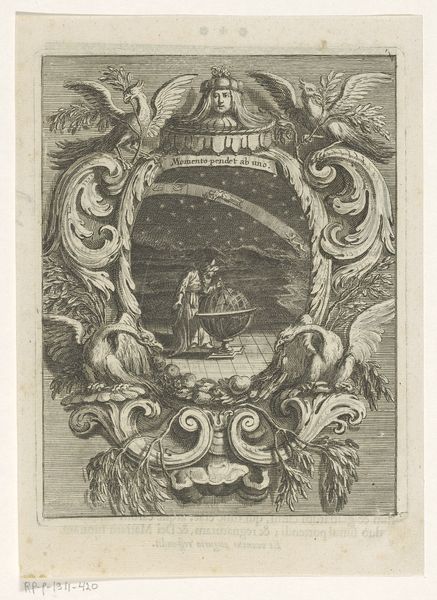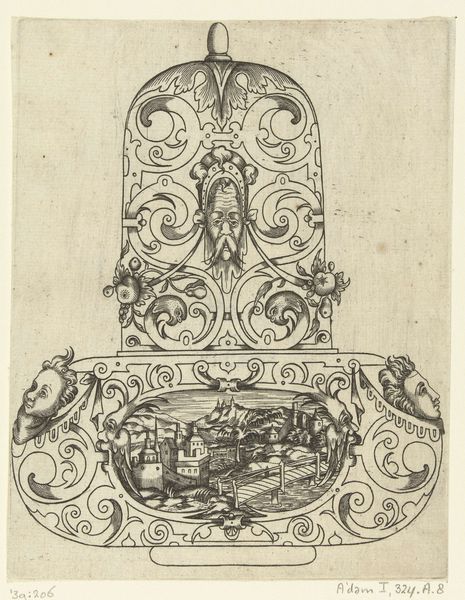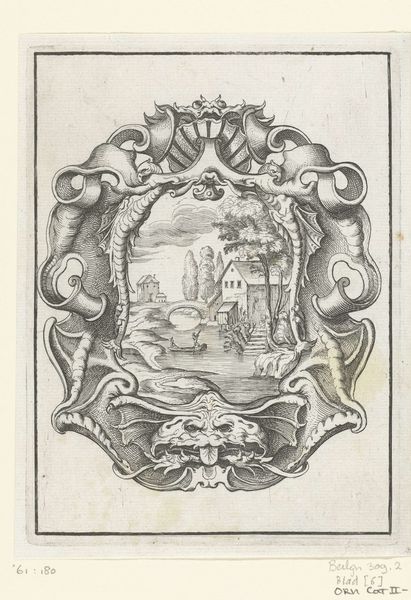
drawing, print, ink, engraving
#
drawing
# print
#
landscape
#
figuration
#
ink
#
geometric
#
northern-renaissance
#
engraving
Dimensions: height 100 mm, width 106 mm
Copyright: Rijks Museum: Open Domain
Curator: What a delicate rendering. We’re looking at a drawing called “Kom met een landschap in een ovaal,” or “Design for a Landscape in an Oval,” which dates from around 1594 to 1635. Editor: It has an air of constrained, idealized beauty, like peering into a tiny, perfect world captured in ink. What’s especially fascinating is that tension between this perfect scene and the very deliberate, decorative border that almost contains it. Curator: Indeed. This work is executed with engraving and ink. Its precise lines reveal the hand of a highly skilled craftsman. These types of ornament prints served as pattern examples for artisans working in various decorative art fields. It would allow for some degree of mass production and adaptation to various crafts like goldsmithing or even embroidery. Editor: That's interesting, because there’s something both aspirational and utilitarian about this, isn’t there? The material value lies not just in its display as an object, but more pointedly in the skills it would enable and distribute through other workshops. The image itself is a vehicle for shared labor and design principles. Curator: Absolutely. The landscape within the oval offers a visual respite, almost a promise of tranquility amid the burgeoning industry outside the frame. Think about the period: urbanization was rapidly transforming the Dutch Republic. Landscape imagery often served as a form of cultural memory, a nod to simpler, agrarian times, a pastoral haven within an increasingly complex society. Editor: That feels spot on. And that symbolic contrast also reinforces the material reality—this print allows more individuals to share in or perhaps just aspire to a scene they're increasingly distanced from in their daily lives. The medium becomes tied to this sense of collective imagining or even cultural longing. Curator: Precisely. These idealized visions permeated material culture through accessible prints like this, weaving collective memory through art. It is really quite poignant, given how we interpret the symbolism today. Editor: In the end, the tension between the idealized landscape and the material context highlights how art serves not only as a mirror but as a lens through which we actively shape our world.
Comments
No comments
Be the first to comment and join the conversation on the ultimate creative platform.
